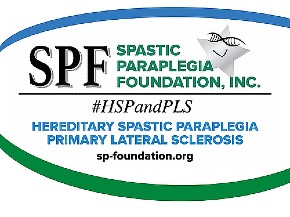NEW YORK – A hypercompact CRISPR-Cas enzyme that was discovered in the genomes of huge bacteriophages has expanded genetic target recognition capabilities relative to Cas9 and Cas12, according to a new study published in Science on Thursday.
In addition to its wider targeting capabilities, the nuclease is nearly half the size of Cas9 and Cas12, making it one of the most compact CRISPR-Cas system ever identified. According to University of California, Berkeley researchers and co-first authors of the study Patrick Pausch and Basem Al-Shayeb, not only does the nuclease have applications in both diagnostics and therapeutics, but its physical characteristics also simplify the delivery of the CRISPR-Cas system into cells, which has long been a challenge in genome editing.
In the paper, a team led by researchers in the Berkeley lab of Jennifer Doudna describes CRISPR-CasΦ, a nuclease that was originally reported in February as part of a paper published in Nature on large gene inventories of huge phages from across Earth's ecosystems. Although CRISPR-Cas systems are found almost exclusively in microbial genomes, the recent discovery of huge bacteriophages revealed that these organisms also carry CRISPR-Cas systems in their genomes with a surprising prevalence, the investigators noted.
According to Al-Shayeb, who was also the first author on the Nature paper, CasΦ is novel in that it's the family of Cas nucleases that was first discovered in bacteriophages that has so far only been found in other bacteriophages rather than also in bacteria or archaea.
CasΦ is a minimal functional CRISPR-Cas system, comprising a single protein of about 70 kilodaltons and a CRISPR array. It uses a single active site for both CRISPR RNA (crRNA) processing and crRNA-guided DNA cutting to target foreign nucleic acids, the researchers said, and is active in vitro and in human and plant cells.
Unlike Cas proteins found in microbes, the Cas nucleases found in bacteriophages tend to lack CRISPR spacer acquisition machinery and generally harbor compact CRISPR arrays that can target the genes of competing phages or phage hosts. CasΦ, which the researchers also called Cas12j, is a family of Cas proteins encoded in the Biggiephage clade — it's remotely related to the nuclease superfamily from which type V CRISPR-Cas proteins are thought to have evolved, but it shares less than 7 percent amino acid identity with other type V CRISPR-Cas proteins.
In their paper, the researchers investigated three divergent CasΦ orthologs from metagenomic assemblies: CasΦ-1, CasΦ-2, and CasΦ-3. To examine CasΦ's ability to recognize and target DNA in bacterial cells, they tested whether it could protect Escherichia coli from plasmid transformation. They began by trying to determine whether the nuclease uses a protospacer adjacent motif (PAM) to target DNA sequences as other Cas nucleases do, so they transformed a library of plasmids containing randomized regions adjacent to crRNA-complementary target sites, thereby depleting plasmids harboring functional PAMs. This revealed CasΦ's crRNA-guided double-stranded DNA (dsDNA)-targeting capability.
The investigators then used the E. coli expression system and plasmid interference assay to determine what components were required for a CRISPR-CasΦ system to function. They observed transcription of the casΦ gene and the reduced CRISPR array but no evidence of other noncoding RNA, such as a transactivating CRISPR RNA (tracrRNA) within the locus. Further, CasΦ activity could be reprogrammed to target other plasmid sequences by altering the guide RNA, suggesting that the nuclease in its native environment is a functional phage protein and CRISPR-Cas effector capable of cleaving crRNA-complementary DNA. The data also showed that this single RNA system is much more compact than other active CRISPR-Cas systems, the researchers added.
"This system is quite minimal compared to other systems since it does not form a complex of proteins in order to function, and in fact, it seems to be able to do more with less," Al-Shayeb said. "It can develop the guide RNA as well as cut the target DNA within the same site in the protein, as opposed to outsourcing the guide RNA development to other enzymes (like Cas9 or Cas14) or carrying additional domains to do this (like [Cas12]). This means it can do more in-house when performing genome editing."
Pausch also noted that while some members of the Cas14 nuclease family are technically the smallest Cas proteins that have been found to date — typically ranging from 500 amino acids to 800 amino acids in length compared to CasΦ's 700 to 800 amino acids — Cas14 does require additional RNA elements, such as a tracrRNA, in order to function, which CasΦ does not.
"In contrast to CasΦ, Cas14 proteins have not been shown to function as genome editing enzymes. The advantage of smaller Cas proteins over larger ones, such as Cas9 and Cpf1 (Cas12a), is the possibility to deliver smaller proteins for genome editing in living systems within compact viral vectors, such as the commonly used adeno-associated virus vector (AAV)," Pausch said. "Moreover, the hypercompact CasΦ would also allow for the codelivery of fusion proteins or other elements alongside the Cas protein within a single AAV to control the genome editing outcome. This has not been feasible prior to our study, as the large size of Cas9 required researchers to split up fusion proteins into several AAV vectors."
To investigate whether CasΦ could be used for human genome editing, they then performed a gene disruption assay using CasΦ coexpressed with a crRNA in HEK293 cells. They found that CasΦ-2 and CasΦ-3 induced targeted disruption of a genomically integrated enhanced green fluorescent protein (EGFP) gene — in one case, CasΦ-2 with an individual guide RNA was able to edit up to 33 percent of the cells, which is comparable to levels initially reported for Cas9, Cas12a, and CasX.
When they tested if CasΦ-2 could be delivered as ribonucleoproteins into plant protoplasts to edit the endogenous Arabidopsis thaliana PDS3 gene, the researchers found that the nuclease introduced primarily 8- to 10-base pair deletions, which was consistent with the cleavage pattern observed in vitro.
CasΦ's small size in combination with its minimal PAM requirement will be particularly advantageous for both vector-based delivery into cells and a wider range of targetable genomic sequences, the authors concluded. Further, its compact nature may make it particularly amenable to engineering and laboratory evolution to create new functionalities for genome manipulation.
When thinking about the nuclease's future potential in the clinic, Al-Shayed added, its origin from an environmental bacteriophage, as opposed to a pathogenic or human gut bacteria could also make it a better therapeutic tool.
"A patient would be less likely to have antibodies or a preexisting immune response against it as has been shown for the widely used Cas9," he said. "Its ability to cut single-stranded DNA in trans can also prove useful as a diagnostic tool."
Pausch and Al-Shayeb also noted that much work still remains to be done on the nuclease's functionality and possible applications. For example, its potential for off-target effects have yet to be tested.
"We are currently working on a set of experiments to further analyze the efficiency of CasΦ for different genome editing applications and we are really curious to see how well it performs in comparison to the already established genome editing tools," Pausch said.
Importantly, Al-Shayeb added, this research shows the potential of bacteriophage-origin Cas systems, and also illustrates how much is still unknown about the wider biology of CRISPR.
"Even with all our knowledge on bacteria and viruses so far, we are barely scratching the surface regarding what is out there," he said. "We are able to cultivate below 1 percent of the bacteria we know, and a small fraction of the viruses that infect that 1 percent. There is a lot to learn about the biology around us and what these entities can do."













